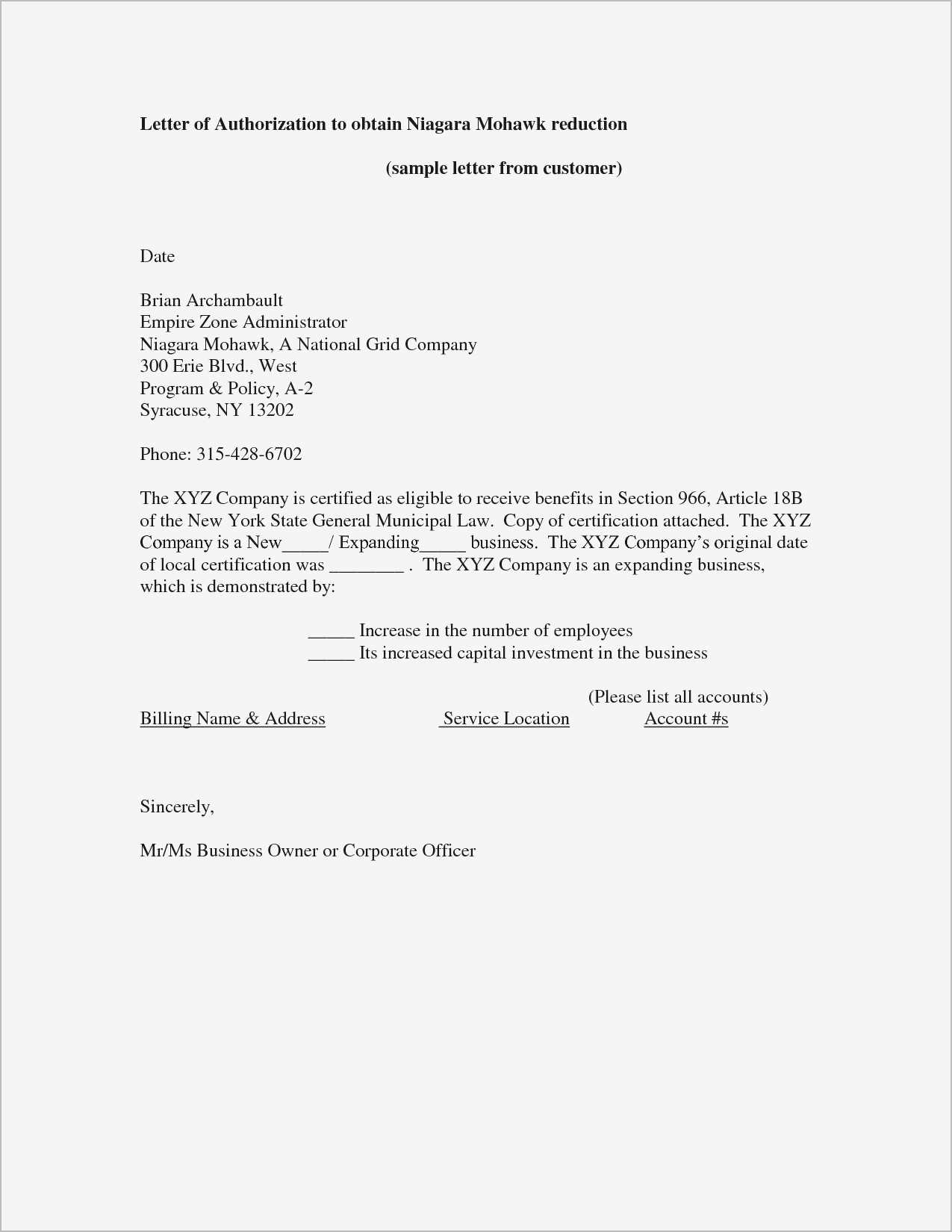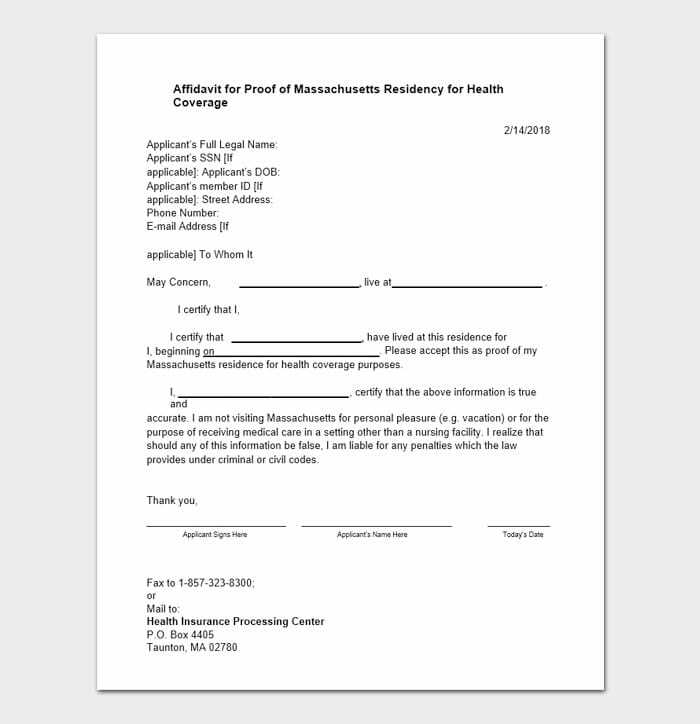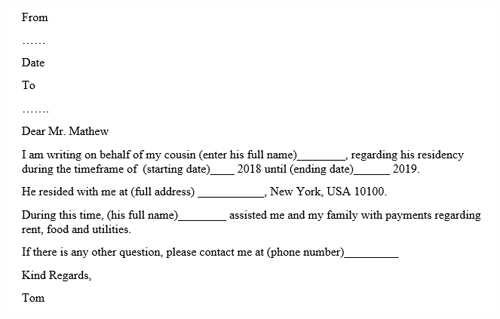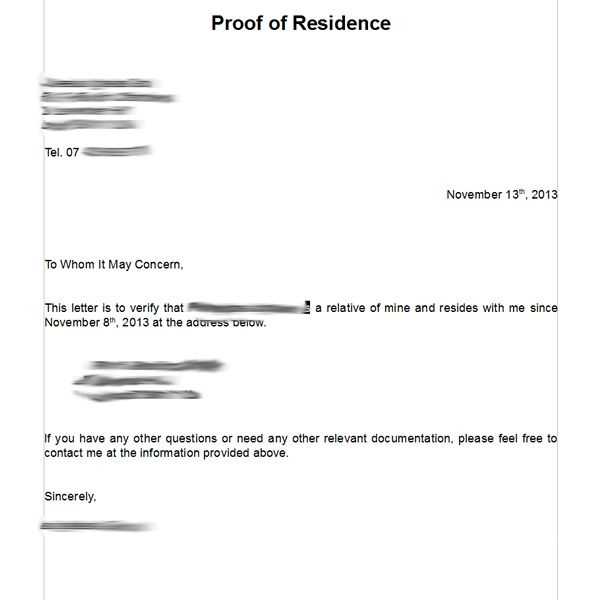Proof of Residency Letter Template for Easy Customization

Sometimes, individuals need to verify their living address for various reasons, such as applying for local services, enrolling in schools, or completing legal paperwork. In such cases, having a structured document that can confirm a person’s place of residence is essential. This kind of verification is often required by authorities or organizations for official purposes.
Customizable formats are widely available, allowing individuals to quickly generate the necessary paperwork. The right format ensures that all required details are included, making the process straightforward and efficient. By using these formats, anyone can create an accurate and professional confirmation of their address without complicated procedures.
In this guide, we will explore how to effectively utilize a ready-made form to craft a valid and legally acceptable document. We’ll also highlight the most important elements to include and common errors to avoid, ensuring you have a flawless result every time.
What is a Proof of Residency Letter
In certain situations, individuals may be asked to confirm their current living situation. This documentation serves as an official declaration of where someone resides, often required by institutions, governmental bodies, or private organizations. The purpose is to validate that the individual resides at a specific address for purposes such as verification of identity, eligibility for services, or legal matters.
This document typically includes essential details such as the individual’s name, address, and the duration of their stay at the location. It is often signed by a third party, like a landlord, employer, or utility company, who can vouch for the person’s residence. The accuracy and clarity of this information are crucial for it to be accepted by the requesting entity.
Importance of Proof of Residency Letters
Having an official document to verify a person’s address is essential in various situations. It helps confirm a person’s place of living when required by organizations or authorities, allowing individuals to access services, complete applications, or comply with legal requirements. Without this verification, certain processes may be delayed or denied.
Verification for Legal and Official Processes
Government agencies, schools, and financial institutions often request address verification to ensure that individuals meet specific criteria. For instance, local authorities might need to confirm residence for voter registration or tax purposes. This documentation acts as a crucial tool in completing such formalities with ease and accuracy.
Access to Services and Benefits

In many cases, people need to show their current living address to apply for services like healthcare, insurance, or educational programs. A formal document ensures that the person is eligible for benefits provided by local institutions, ensuring they receive the appropriate support and assistance.
When to Use a Residency Letter
This document is often required when confirming a person’s living address for various applications. It may be requested by banks, government offices, or schools to verify that an individual resides at a specific location. Whether for legal purposes or to access certain services, having this document ensures that your current address is recognized and validated by the requesting entity.
Common scenarios include applying for a driver’s license, enrolling children in school, securing housing, or registering for local voting. In each case, the document serves as an official confirmation of where you live, ensuring your eligibility and facilitating the completion of your application process.
Key Information to Include in the Letter

For this type of documentation to be accepted, it must contain all relevant details that clearly establish the individual’s living situation. The document should include the person’s full name, the exact address where they reside, and the duration of their stay at that location. These are essential pieces of information that validate the claim of residence.
Additionally, it is important to include the name of the person or entity providing the verification, such as a landlord, employer, or utility company. This helps establish the authenticity of the document. A signature and the date when the document was created further solidify its validity, ensuring that it can be used in official processes or applications.
How to Customize Your Template

Adapting a standard form to fit your specific needs is a simple process that ensures the document includes all necessary details. Customization allows you to tailor the information to suit the requirements of the requesting party while maintaining clarity and professionalism. Whether you’re adding specific address details or adjusting the format, it’s important to make sure all essential fields are correctly filled out.
Editing Key Information
To begin, you should modify the form to reflect your personal or household information. Ensure the address, name, and dates are accurate. It’s essential to double-check that the details match what the requesting organization expects.
Adjusting the Format and Structure
Sometimes, depending on the situation, the format may need slight modifications. Some institutions prefer a formal tone, while others might accept a less structured approach. Below is an example of how the data should be organized:
| Field | Details |
|---|---|
| Full Name | [Your Name] |
| Address | [Your Full Address] |
| Duration of Stay | [Start Date] to [End Date] |
| Verifier’s Name | [Landlord/Employer’s Name] |
| Signature | [Verifier’s Signature] |
Common Mistakes to Avoid in Letters
When creating this type of document, certain errors can undermine its validity and cause delays in the process. It’s essential to be aware of these pitfalls to ensure the document is both accurate and acceptable to the requesting party. Below are common mistakes to watch out for.
- Missing Key Information: Omitting important details, such as the full name, address, or duration of stay, can render the document incomplete. Always double-check that all necessary fields are filled in correctly.
- Incorrect Date: Using the wrong dates can cause confusion and lead to a rejection. Ensure the dates are accurate, especially when listing the duration of residence.
- Unclear or Inaccurate Address: Providing an address that doesn’t match official records or is unclear can lead to further verification requests. Ensure that the address is complete and matches other official documents.
- Lack of Signature: A signature from the person verifying the information is crucial. Without it, the document might not be considered official.
By avoiding these errors and following the correct format, you can ensure your document will be accepted without unnecessary complications.